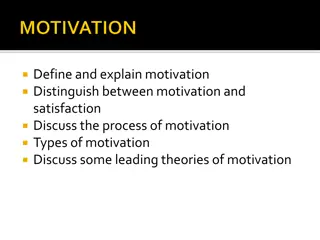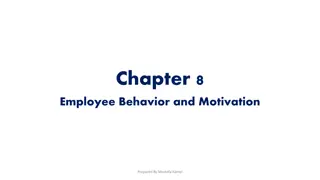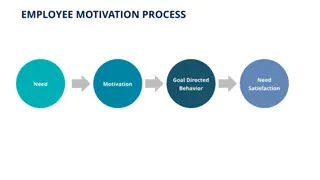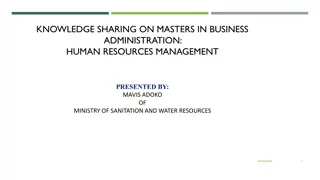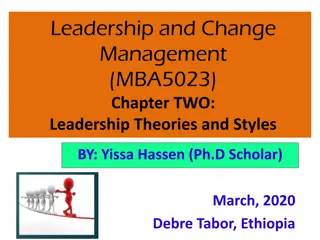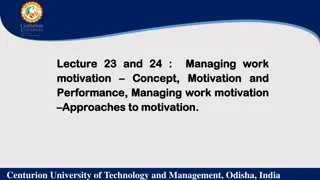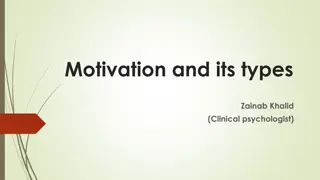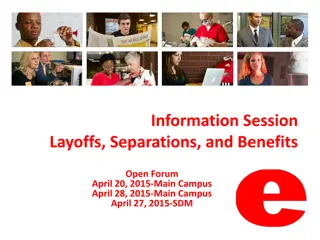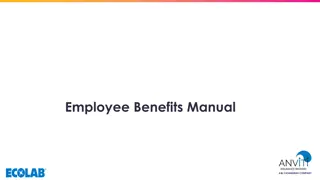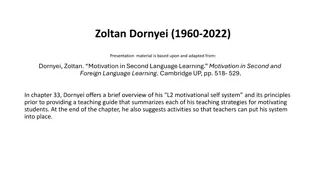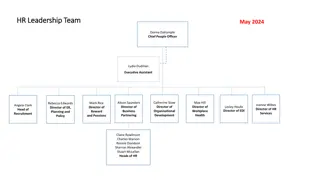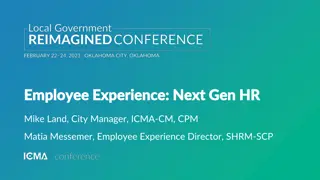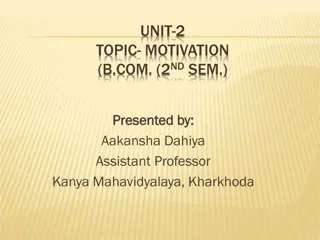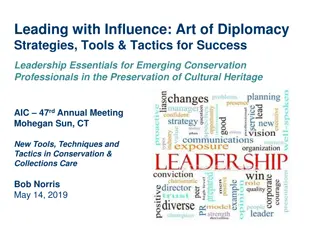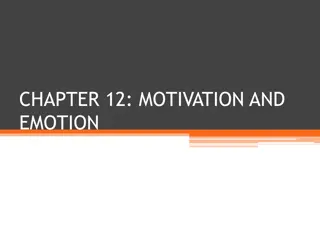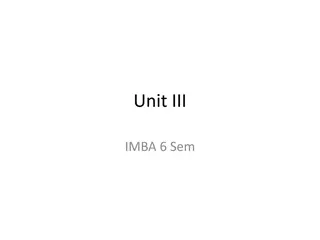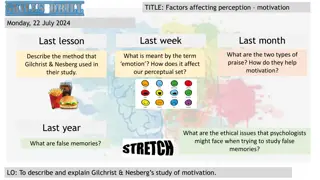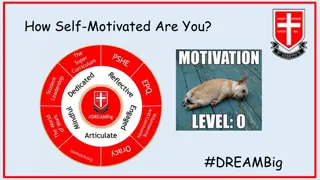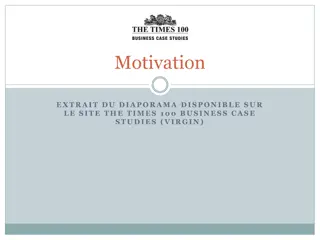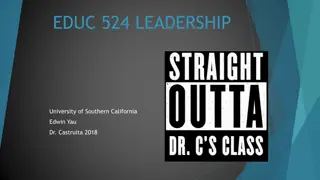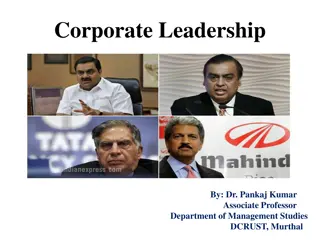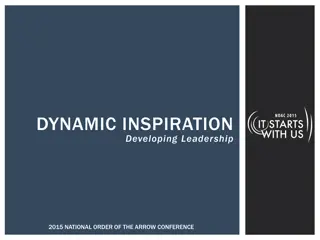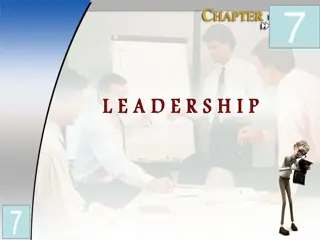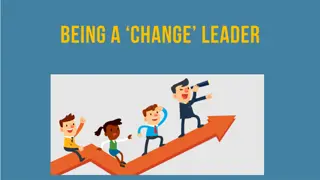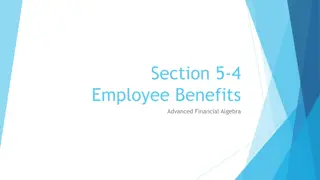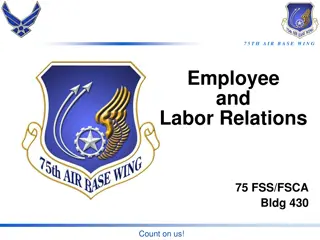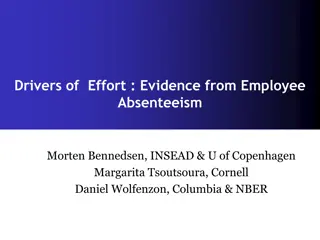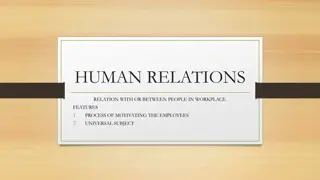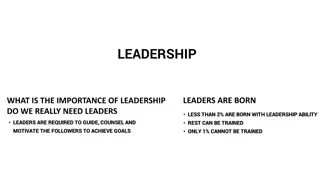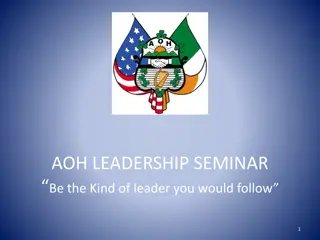Effective Employee Motivation and Leadership Strategies
Understanding and implementing effective strategies for motivating, satisfying, and leading employees is crucial for organizational success. From psychological contracts to job satisfaction, this comprehensive guide delves into key aspects such as employee expectations, organizational inducements, morale, turnover rates, and different motivational theories like Maslow's Hierarchy of Needs and Herzberg's two-factor theory. Discover insights on how to create a positive work environment, inspire employees to excel, and drive business growth through effective leadership and motivation techniques.
- Employee Motivation
- Leadership Strategies
- Job Satisfaction
- Organizational Inducements
- Motivational Theories
Download Presentation

Please find below an Image/Link to download the presentation.
The content on the website is provided AS IS for your information and personal use only. It may not be sold, licensed, or shared on other websites without obtaining consent from the author. Download presentation by click this link. If you encounter any issues during the download, it is possible that the publisher has removed the file from their server.
E N D
Presentation Transcript
Motivating, Satisfying, and Leading Employees
A leader is best when people barely know he exists, when his work is done they will say: We did it ourselves. ~ Lao-Tzu, c. 600 B.C. Leadership is the art of getting someone else to do something you want done because he wants to do it. ~ Dwight D. Eisenhower, 1890 - 1969
Psychological contracts in the workplace Job satisfaction and employee morale Theories of employee motivation Job satisfaction and employee motivation Managerial styles of leadership
Contributions: What does each employee expect to contribute to the organization? Inducements: What will the organization provide to each employee in return?
Job Satisfaction: Degree of enjoyment employees derive from doing their jobs TURNOVER MORALE High Morale: An overall positive employee attitude toward the workplace TURNOVER MORALE Low Turnover: A low percentage of employees leave each year
It's not easy being good these days at least if you're an employer. Edward Jones #1 #15 #28 #41 #58 #94 Cisco Systems Microsoft Patagonia Starbucks Wal-Mart Source: Fortune Magazine, February 4th, 2002
Motivation: The set of forces that cause people to behave in certain ways Classical Behavior: The Hawthorne Studies Contemporary
Theory Y People are energetic. People are ambitious and seek responsibility. People can be selfless. People want to contribute to business growth and change. People are intelligent. Theory X People are lazy. People lack ambition and dislike responsibility. People are self- centered. People resist change. People are gullible and not very bright.
Content Motivational Theories 1. Maslow s Hierarchy of Needs 2. Alderfer s ERG Needs 3. Herzberg s two- factor theory 4. McClelland s Achievement Motivation Process Motivational Models 1. Vroom s Expectancy Theory 2. Adam s Equity Theory 3. Skinner s Reinforcement Theory
General Examples Organizational Examples Self- Self- Actualization Actualization Needs Needs Esteem Needs Social Needs Security Needs Physiological Needs Self-Fulfillment Challenging Job Status Job Title Esteem Needs Friendship Friends at Work Social Needs Stability Pension Plan Security Needs Physiological Needs Shelter Salary
Hygiene Factors Motivation Factors Supervisors Achievement Working Conditions Recognition Interpersonal Relations The Work Itself Pay & Security Responsibility Company Policies & Administration Advancement & Growth Dissatisfaction Satisfaction
Individual Effort Individual Performance Organizational Rewards Personal Goals Effort- Performance- Reward Issue Rewards- Personal Goals Issue Performance Issue
Employees evaluate their treatment relative to the treatment of others Inputs: Employee contributions to their jobs Outputs: What employees receive in return The perceived ratio of contribution to return determines perceived equity
Reinforcement/behavior modification Management by objectives Participative management and empowerment Job enrichment and job redesign Modified work schedules
Punishment When negative consequences are attached directly to undesirable behavior Positive Reinforcement When rewards are tied directly to performance
Collaborative Goal Setting & Planning Communicating Organizational Goals & Plans Periodic Review Evaluation Meeting Setting Verifiable Goals & Clear Plans Counseling Identifying Resources
Increasing job satisfaction by encouraging participation Team management represents a growing trend
Job Enrichment: Adding one or more motivating factors to job activities Job Redesign: Designing a better fit between workers and their jobs Combining tasks Forming natural work groups Establishing client relationships
Work share programs Flextime programs and alternative workplace strategies Telecommuting and virtual offices
6:00 A.M. 7:00 A.M. 8:00 A.M. 9:00 A.M. 10:00 A.M. 11:00 A.M. 12:00 NOON 1:00 P.M. 2:00 P.M. 3:00 P.M. 4:00 P.M. 5:00 P.M. 6:00 P.M. Flexible Time Core Time Flexible Time Core Time Flexible Time Joe Sue Pat
Advantages Disadvantages More satisfied, committed employees Challenging to coordinate and manage Less congestion Poor fit for some workers
The process of motivating others to work to meet specific objectives
Challenge the process Inspire a shared vision Enable others to act Model the way Encourage the heart Source: www.theleadershipchallenge.com
A high energy level The ability to energize others around common goals The edge to make tough decisions The ability to consistently execute and deliver on promises Source: Jack Welch Tells It Straight from the Gut, Anderson Assets, Winter 2002
Autocratic Style Democratic Style Free-rein Style Contingency Approach The appropriate style in any situation is contingent on the unique elements of that situation
Motivation Security and pay are no longer enough Leadership Coach mentality Diversity Flexibility


